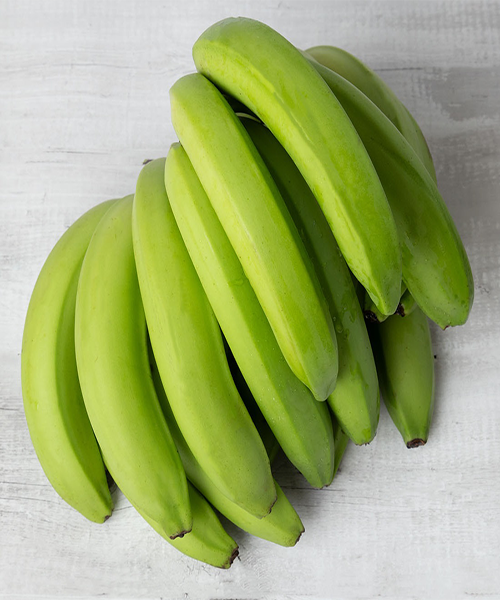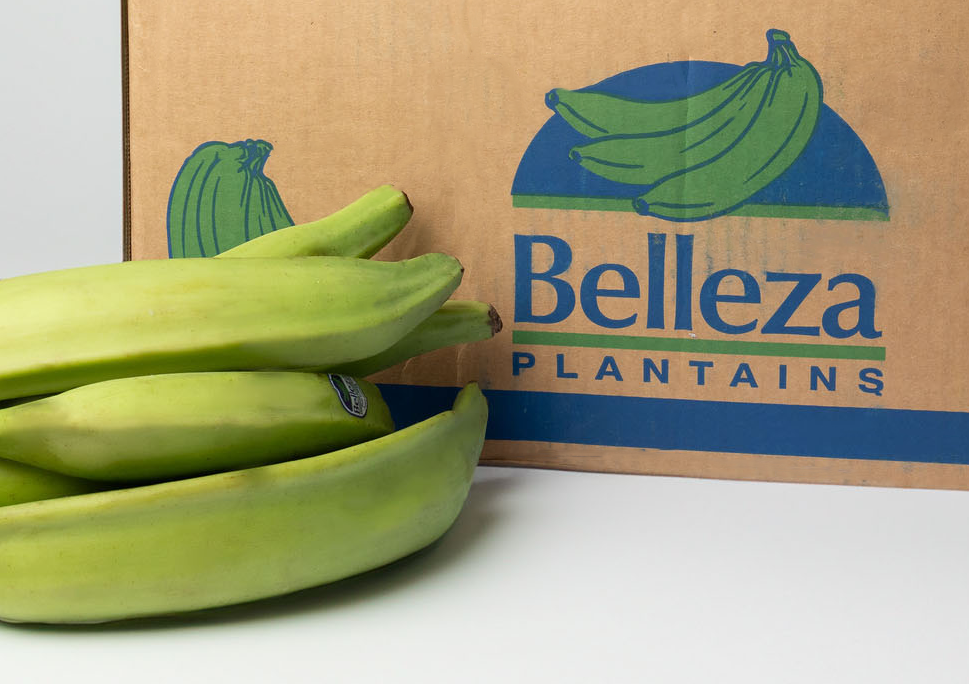A Versatile Staple with a Rich Culinary Tradition.


A Versatile Staple with a Rich Culinary Tradition.


Green plantains, a common ingredient in many tropical and subtropical regions, are known for their versatility and unique flavor profile. Though often mistaken for bananas, plantains are their own distinct fruit with a wealth of culinary applications. In this article, we will explore the origins of green plantains, their nutritional benefits, culinary uses, and cultural significance.
Origins and Cultivation
Green plantains (Musa spp.) belong to the Musaceae family, which includes bananas. They are believed to have originated in Southeast Asia and were spread to Africa, the Caribbean, and Latin America through ancient trade routes. Today, plantains are cultivated in various parts of the world, particularly in countries with warm climates.
Plantains are grown in clusters known as "hands" on large, tropical plants. The fruits themselves can vary in size but typically have a thicker skin than bananas. While they can be eaten at various stages of ripeness, green plantains are generally used in savory dishes due to their starchy composition.
Nutritional Profile
Green plantains are a rich source of carbohydrates, primarily in the form of starch. As they ripen, the starches gradually convert to sugars, making ripe plantains sweeter. They are also low in fat and contain moderate amounts of dietary fiber, making them a valuable addition to a balanced diet.
Additionally, green plantains contain several essential vitamins and minerals, including:
- Vitamin C: An antioxidant that supports the immune system and helps protect against oxidative stress.
- Vitamin A: Important for vision and immune function.
- Potassium: A crucial mineral for maintaining healthy blood pressure levels and muscle function.
- Magnesium: Vital for nerve function and muscle contraction.
Despite their carbohydrate content, green plantains have a low glycemic index, which means they do not cause rapid spikes in blood sugar levels. This characteristic makes them suitable for individuals with diabetes or those seeking to manage their blood sugar.
Culinary Uses
One of the most appealing aspects of green plantains is their versatility in the kitchen. They can be boiled, fried, grilled, roasted, or baked, offering a range of textures and flavors. Here are some popular culinary applications for green plantains:
1. Tostones
Tostones are a beloved dish in many Caribbean and Latin American countries. To make tostones, green plantains are sliced into rounds, fried until golden, flattened with a kitchen utensil, and then fried again to achieve a crispy texture. They are often served with dipping sauces or as a side dish.
2. Mofongo
Mofongo is a traditional Puerto Rican dish made from mashed green plantains. The plantains are fried and then mashed with garlic, olive oil, and often pork cracklings (chicharrón). Mofongo can be served as a side dish or as a base for various toppings, such as sautéed shrimp or stewed meats.
3. Plantain Chips
Plantain chips are a popular snack made by slicing green plantains thinly and frying them until crisp. These chips can be seasoned with various spices or simply salted. They are a healthier alternative to traditional potato chips due to their lower fat content and higher fiber levels.
4. Plantain Soup
In some cultures, green plantains are used to make hearty soups. The plantains are boiled with other vegetables and sometimes meat to create a rich, starchy broth. This type of soup is commonly enjoyed in African and Caribbean cuisine.
5. Plantain Fritters
Plantain fritters are a sweet treat made from green plantains, flour, sugar, and other flavorings. They are typically deep-fried to a golden brown and enjoyed as a dessert or snack.
Cultural Significance
Green plantains hold significant cultural importance in many regions. They are a staple food in the Caribbean, Latin America, and parts of Africa, where they are used in a wide variety of traditional dishes. In these cultures, plantains are often seen as a source of comfort and connection to heritage.
For example, in West Africa, plantains are a common ingredient in traditional meals and are often used in celebrations and gatherings. In the Caribbean, dishes like tostones and mofongo are integral to local cuisine and are enjoyed by families across generations.